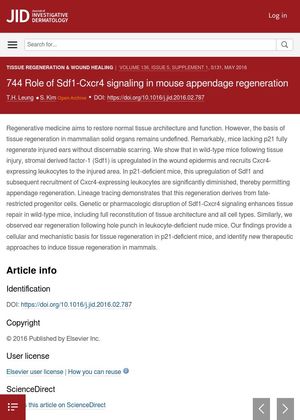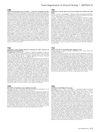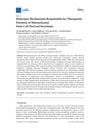Role of Sdf1-Cxcr4 Signaling in Mouse Appendage Regeneration
April 2016
in “
Journal of Investigative Dermatology
”

TLDR Mice without the p21 gene can fully regenerate injured ears due to reduced Sdf1 increase and leukocyte recruitment, suggesting new ways to induce tissue regeneration in mammals.
The 2016 study "Role of Sdf1-Cxcr4 signaling in mouse appendage regeneration" found that mice lacking the p21 gene could fully regenerate injured ears without noticeable scarring. The study showed that in normal mice, tissue injury led to an increase in stromal derived factor-1 (Sdf1), which attracted Cxcr4-expressing leukocytes to the injury site. However, in p21-deficient mice, this Sdf1 increase and leukocyte recruitment were significantly reduced, allowing for appendage regeneration. The study also found that this regeneration came from fate-restricted progenitor cells. Disrupting Sdf1-Cxcr4 signaling, either genetically or pharmacologically, improved tissue repair in normal mice, including full reconstitution of tissue architecture and all cell types. Similar ear regeneration was observed in leukocyte-deficient nude mice. These findings provided a cellular and mechanistic basis for tissue regeneration in p21-deficient mice and suggested new therapeutic approaches to induce tissue regeneration in mammals.


